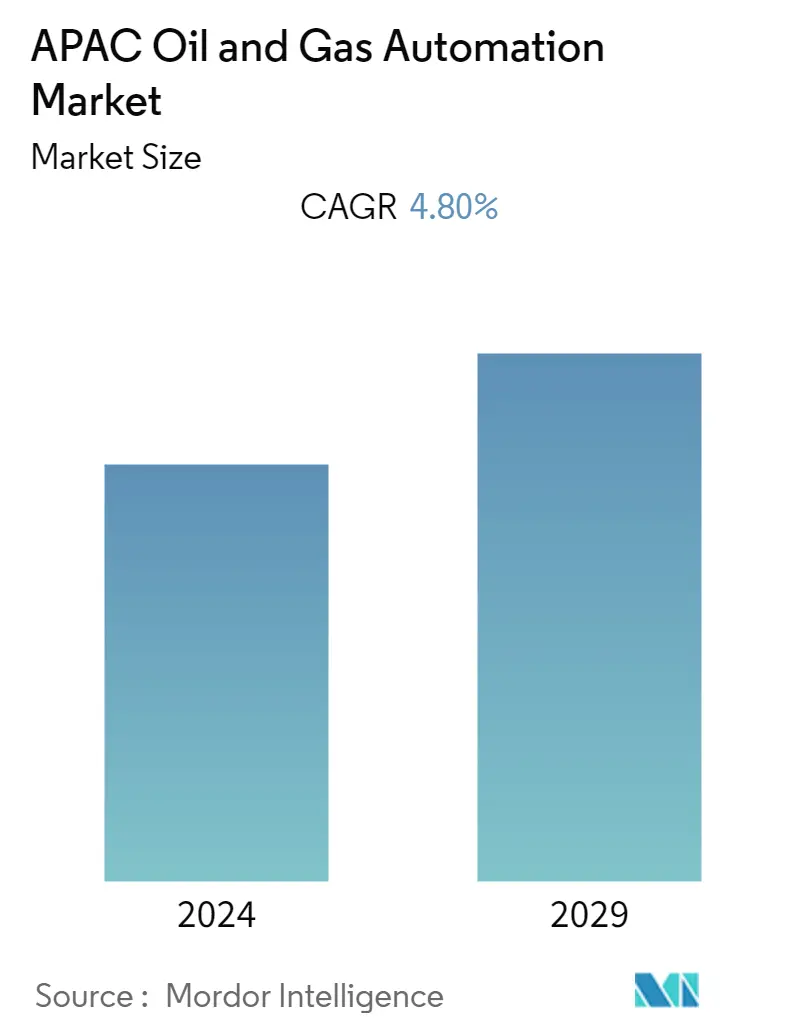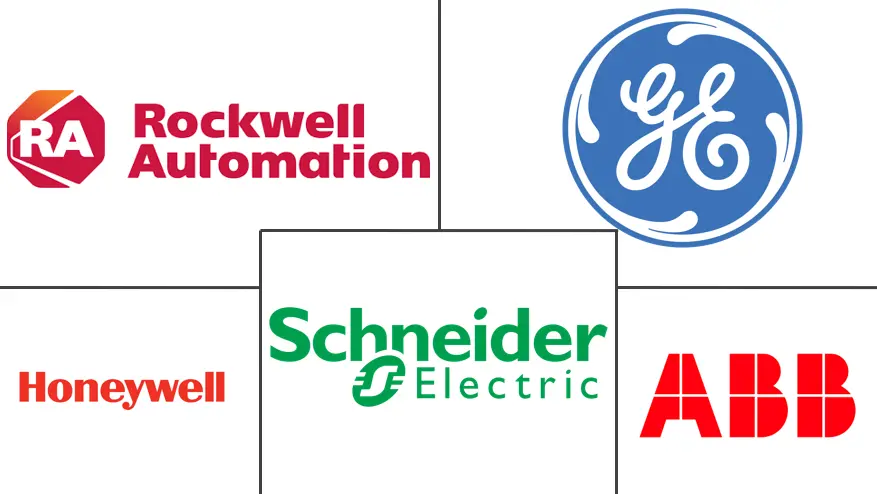Market Size of APAC Oil & Gas Automation Industry

| Study Period | 2019 - 2029 |
| Base Year For Estimation | 2023 |
| Forecast Data Period | 2024 - 2029 |
| Historical Data Period | 2019 - 2022 |
| CAGR | 4.80 % |
| Market Concentration | Medium |
Major Players
*Disclaimer: Major Players sorted in no particular order |
Need a report that reflects how COVID-19 has impacted this market and its growth?
APAC Oil Gas Automation Market Analysis
The Asia Pacific Oil and Gas Automation Market was valued at USD 14.9 billion in 2020 and is expected to reach USD 19 billion by 2026, at a CAGR of 4.8% over 2021 - 2026. In the oil and gas industry processes, there is always a high demand for safety and reliability. The supply chain of this industry creates a great need for automation, industry expertise, and an extensive partner network. Process automation helps oil and gas producers integrate information, control, power, and provide safety solutions to respond to the dynamic global demand.
- Automation is being adopted across several industries to make an immediate and lasting difference, particularly in a large industry like the oil and gas sector. The oil & gas industry has begun the move toward digitization with more sensors accumulating data from rigs worldwide. However, there are still some untapped areas where companies can improve within an increasingly diverse market. Employing digital technologies can help engineering teams work more efficiently with oil and gas companies to manage data and project requirements better, improving internal communications and simplifying planning.
- Furthermore, in countries like India, there is a severe need to double the country's refining potential by 2040 to suffice growing fuel demand as passenger vehicles increase. However, downstream companies such as BP (India) have no plans to build new refineries despite growing oil production. They are expected to focus on modernizing existing plants while expanding their network of filling stations to generate USD 3 billion in additional cash.
- Declining sensor costs could also offer several cost-cutting measures to implement automation technologies in the oil & gas industry to improve productivity and eliminate any possible hindrances in the business model.
- However, according to the Digital-Re-Definery report released in the past year, the number of refiners that reported digital technologies delivering a margin improvement of more than 10% in refining operations dropped from 11% to 3%. The numbers also dropped for all subsequent margin improvement ranges. This underscores the fact that there is considerable potential for improvement as Oil and Gas Refineries are yet to capitalize ultimately on digital investments.
- Additionally, the oil & gas industry is suffering from a skilled labor shortage. The shallow talent pool has made it complicated for oil & gas companies to hire new employees with the technical skills required to work on new energy sources. Moreover, stress with the oil prices declining over 2020, in the wake of COVID-19 & price war between Saudi Arabi and Russia, is expected to drive the oil-producing companies to improve their production efficiency and dive the demand in the sector.
